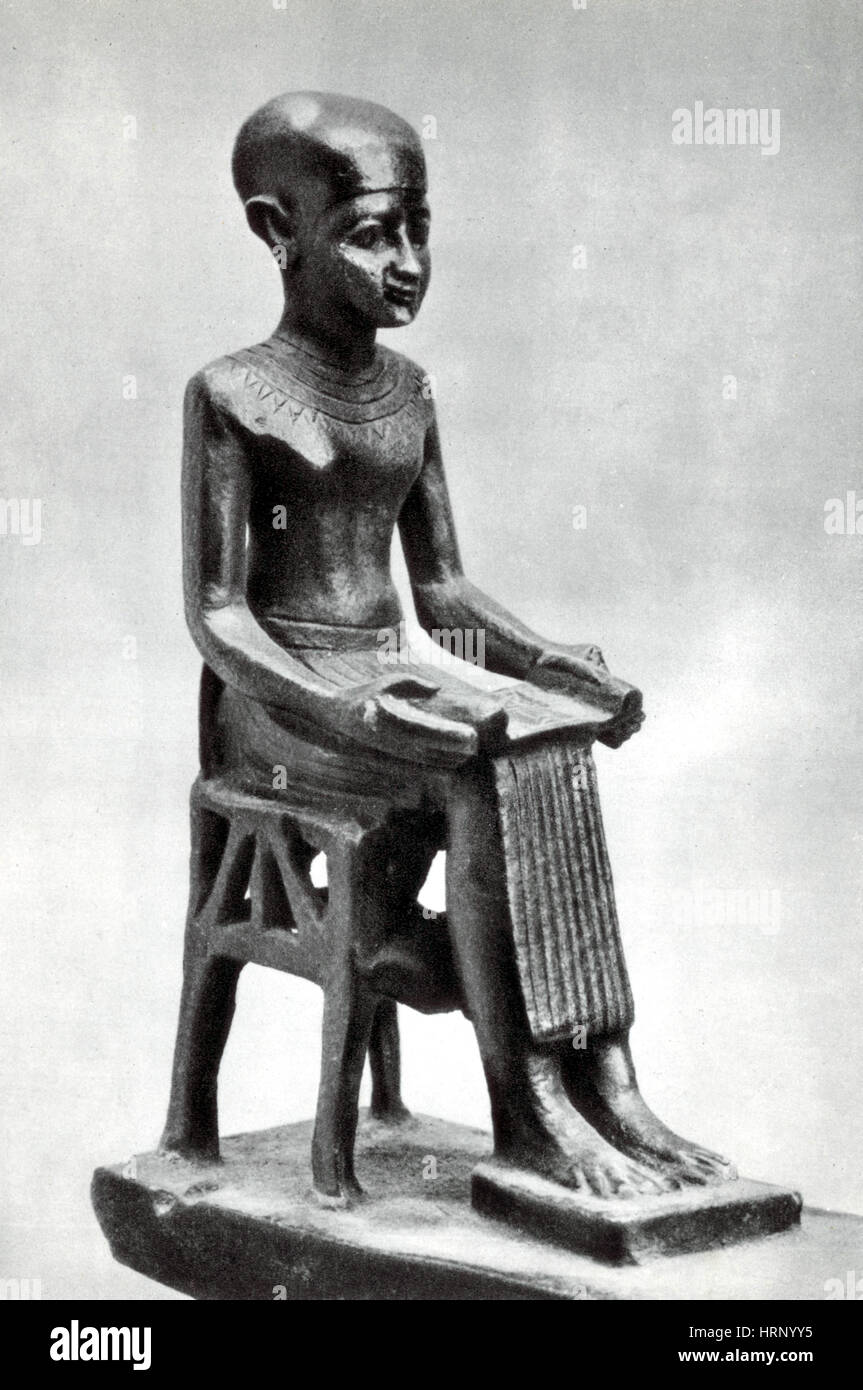Imhotep, Egyptian Polymath

Image details
Contributor:
Science History Images / Alamy Stock PhotoImage ID:
HRNYY5File size:
31.2 MB (1 MB Compressed download)Releases:
Model - no | Property - noDo I need a release?Dimensions:
2691 x 4052 px | 22.8 x 34.3 cm | 9 x 13.5 inches | 300dpiPhotographer:
Photo ResearchersMore information:
This image could have imperfections as it’s either historical or reportage.
Imhotep (circa 2650-2600 BC) was an Egyptian polymath, who served under the Third Dynasty king Djoser as chancellor to the pharaoh and high priest of the sun god Ra (or Re) at Heliopolis. He is considered by some to be the earliest known architect and engineer and physician in early history. He was one of only a few commoners ever to be accorded divine status after death. The center of his cult was Memphis. Egyptologists credit him with the design of the Pyramid of Djoser (the Step Pyramid) at Saqqara. He may have been responsible for the first known use of columns to support a building. He was the author of a medical treatise remarkable for being devoid of magical thinking; the so-called Edwin Smith papyrus containing anatomical observations, ailments, and cures. The surviving papyrus was probably written around 1600 BC but may be a copy of texts written a thousand years earlier. Two thousand years after his death, Imhotep's status was raised to that of a deity of medicine and healing.